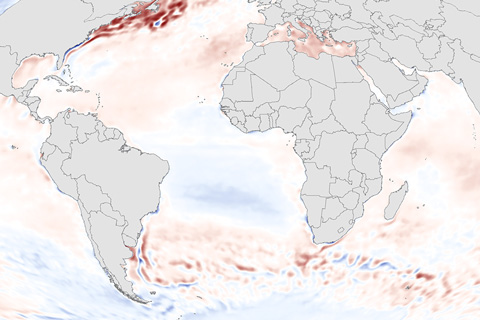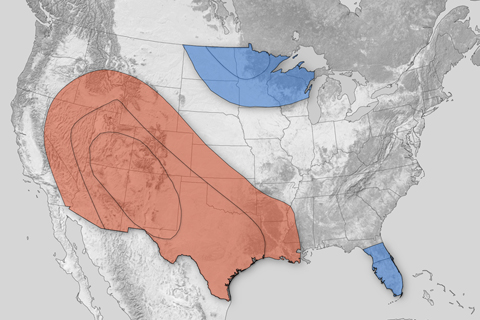
Andrea, Barry, Chantal, Dorian, Erin... who’s next? Probably plenty more, according to NOAA’s updated Atlantic hurricane season outlook. With five named storms already in the books this summer, the 2013 hurricane season is shaping up to be above normal.

Global average sea level in 2012 was 1.4 inches above the 1993-2010 average, which was the highest yearly average in the satellite record. Sea level has been rising over the past century, and the pace has increased in recent decades.

Sea surface temperature—the average temperature of water at the surface of the global ocean—is a key indicator of the ocean's status.

The ocean’s ability to store and release heat over long periods of time gives it a central role in stabilizing Earth’s climate system. But when the ocean absorbs more heat than it releases, its heat content increases. Warming causes water to expand, raising global sea level. Higher water temperatures can also threaten marine ecosystems, disrupting fisheries and the people who depend upon them. The upper ocean held more heat than average in 2012 in most of the major ocean basins, with the exception of the Pacific Ocean.

Worried about Water? Tracking Climate Assures Supply
June 10, 2013

As the whole ocean gets warmer, NOAA scientists must redefine what they consider “average” temperature in the central tropical Pacific, where they keep watch for El Niño and La Niña.

Although 2012 warmth did not top the charts, it was the third warmest “La Niña year” on record.

The Pushy Pacific: Variability and Change in Global Temperature
December 17, 2012

Much of the western and southern central United States could be in for a warmer-than-average winter this year, while the upper Midwest and Florida peninsula could experience colder-than-average temperatures. Most of California and western Nevada could experience well-below-normal precipitation, while parts of the southeast could receive well-above-normal precipitation.
